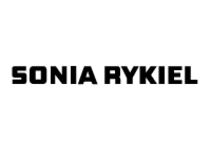Sonia Rykiel
Accessories / Apparel / Bags / Denim / Shoes / Underwear & Lingerie
She's been crowned the "Queen of Knits" and "Coco Rykiel" by the American press for her quirky, deconstructed garb that upended Left Bank chic, but it all began when Parisian Rykiel starting sewing...
She's been crowned the "Queen of Knits" and "Coco Rykiel" by the American press for her quirky, deconstructed garb that upended Left Bank chic, but it all began when Parisian Rykiel starting sewing stylish maternitywear for her pregnant self in the early sixties. Aside from window-dressing her father's shops in her teens, Rykiel had no formal training. But she soon began designing knitwear with resources from her retailer husband's business, creating the iconic, shrunken "poor boy" sweater. By 1968, Rykiel opened her own boutique on the Left Bank, from which she hawked her covetable knits. From there, she proceeded to invert seams, de-line looks, and add other non-precious, fun effects to her clothes, winning her a following among the fashion-forward-and the literati (she penned an erotic romance novel about a man, a woman, and a sweater). In 1996, the French government showed its appreciation by awarding her the Legion d'Honneur. Today, her label encompasses lingerie, accessories, children's clothing, menswear, and beauty, and is still a family-owned business-her daughter Nathalie (who spent more than a decade as creative director) is president and artistic director. In 2008, Gabrielle Greiss-Sonia's longtime chief assistant-was promoted to creative director of women's ready-to-wear.Brand Details
Founder
Sonia Rykiel
Designer
Geraldo da Conceicao
from
2012to
2014Julie de Libran
from
May 2014to
PresentBrand Strategy
Market segment
Premium
Core business
Apparel
Targets
Women, Kids
Sonia Rykiel Latest News
Sonia Rykiel closes historic store
Sonia Rykiel closes historic store in Boulevard Saint-Germain in Paris
Sonia Rykiel Financial Report 2024
Last fiscal year ended on December 31, 2011
